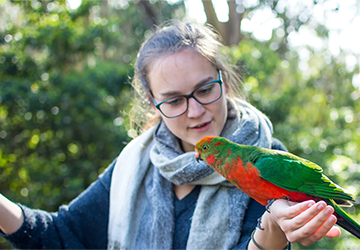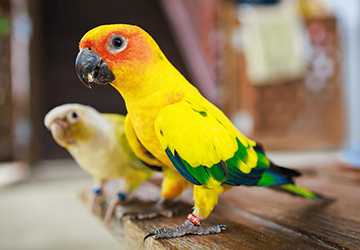Bird owners know training our feathered friends takes patience, persistence and positive motivation. We want to reinforce good behaviours so our pets become delightful companions resting on our shoulders or showing silly tricks.
But how exactly should we go about conditioning our chatty cockatiels or singing finches?
Luckily, the proven principles of positive reinforcement give us a helpful framework. This humane, reward-based system encourages desired actions and discourages unwanted misbehaving.
Over time, birds associate specific cues and conduct with treats, praise and playtime. Soon, your pet will clamour to repeat popular tricks for your applause!
In this blog post, we’ll highlight seven essential methods any bird owner can use to train with positive reinforcement. You’ll learn insider tips to use food, toys and attention to guide your pets.
Soon, you’ll bond better with your feathered friend and turn training sessions into delightful daily rituals.
7 Ways to Use Positive Reinforcement with Your Bird
Let’s explore handy methods to employ food, toys, praise and attention rewards for training success.
Here are seven simple yet powerful ways to leverage positive reinforcement to bond with and train your home’s feathered superstar!

1.Target with Treats
Without a doubt, the fast-track way to a bird’s heart and brain is through its stomach! Keep training sessions short but power-packed by immediately rewarding desired actions with tasty treats.
Sunflower seeds, spray millet, pine nuts, and fruit drive birds wild. Keep tidbits healthy and sized appropriately for your pet. Then promptly treat actions like stepping onto your hand, dropping toys on command or mimicking speech when prompted.
Over repetition, your bird will connect its actions with edible rewards. You’ll notice your feathered friend clamouring to show off popular tricks in hopes of delicious treats!
2.Praise Effusively
Birds have sensitive ears and sizable egos requiring frequent praise! When your companion correctly responds to cues, enthusiastically cheer it on with a hearty “Good bird!” or a loud kiss noise.
You can also clicker train your bird by consistently offering treats each time you click. Then, phase out food rewards while still clicking on correct behaviours. The noise becomes its reward.
Tailor cheers to individual personalities - some prefer whistles, others cooing baby talk, and some only respond to raucous applause.
3.Get Attention
Like any pet, birds relish one-on-one time with their preferred people. You can use your companionship as a positive reinforcer by praising good behaviour with your full attention.
Sit closely while petting or playing with birds after they step up properly or come when called. Ignore yelling, biting or cage rattling - attention fuels unwanted misbehaviours.
Show your companions that appropriate conduct earns enjoyable interaction.
4.Allow Freedom
Birds stuck inside cages often act out with annoyance and frustration. Allow well-behaved birds out of cage playtime to reinforce polite comportment when locked up.
Completely ignore screaming, mess-making or aggression displayed inside the cage. Let your pet out only when displaying calmness or engaging in preferred tricks. Over time, clever birds realize which behaviours eventually result in delightful freedom.

5.Guide with Targets
Purchase affordable plastic target sticks; then clicker trains your bird to peck or touch its beak to the tip. Use chopsticks, plastic spoons with decorative ends or colourful pointer wands.
Through positive reinforcement with treats, teach your pet to follow and touch target cues. Eventually, use your target stick to guide your bird in desired directions into and out of cages, play centres or travel carriers.
As a bonus, target training builds trust and confidence during handling.
6.Try Shaping Techniques
The principle of shaping rewards gradual steps toward a bigger goal through tremendous patience.
For example, if you want to teach a bird to spin in a circle ultimately, reinforce it by turning its head, turning halfway, and doing a small hop while turning before finally completing a whole spin.
Shaping allows you to mark and positively reinforce baby steps toward bigger tricks.
7.Add Excitement
To keep your pet enthusiastic about training, intersperse old and new skills with playful distractions. Add variety by coaching tricks on new perches, introducing fun toys as props and keeping reward treats exciting.
Maintaining an element of surprise and adventure makes positive reinforcement more rewarding. Always end sessions while your birds still want more to keep the progress strong!
Conclusion
Using positive reinforcement to train birds takes patience yet reaps beautiful rewards. You instil good behaviours in your pet by consistently rewarding desired actions with treats, cheers, attention and freedom.
Meanwhile, ignoring unwanted misdeeds discourages naughtiness over time. Employ these seven training tips to deepen your bond through shaping, targets and excitement.
Soon, your bird will delight in showcasing new skills just for your praise and company. Positive reinforcement builds a lifetime of care, trust and enjoyment with your feathered companion.